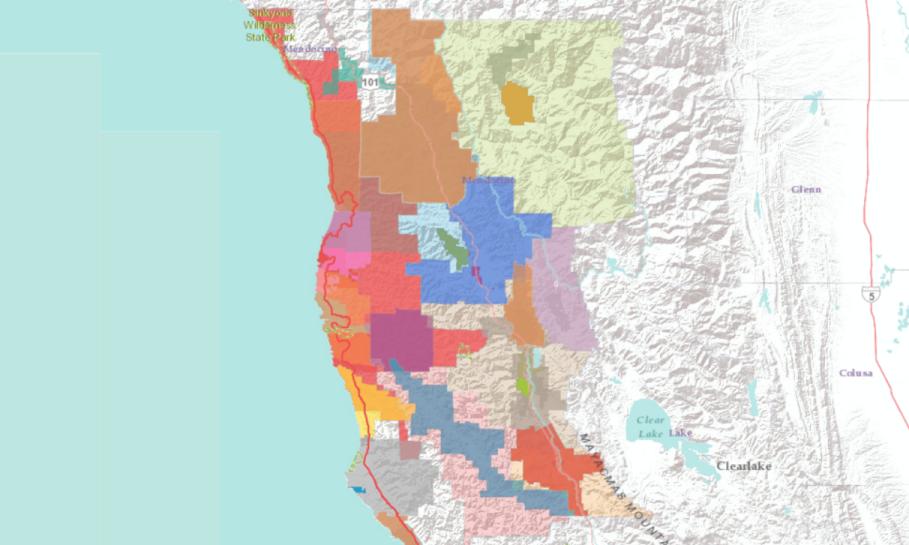UKIAH, 1/7/18 — As part of our ongoing coverage of local government here in Mendocino County, we’ve made a podcast about some of the kinds of local governments in rural Northern California, because it turns out, a lot of us don’t actually understand who our elected officials are, and where our services come from — or for that matter, where our taxes go.
Across the state, services are often rendered not by the county, state, or city, but by special districts. And the people who decide policy for those districts are not the board of supervisors, or city council, but a totally different board for those districts. And there are also a ton of them — from fire districts and school districts, to recreation districts, water districts, lighting districts, and even cemetery districts.
We believe that part of the issue around some of the confusion is just the lack of transparency and readily avaliable information, and to that end we create our new website, the Mendocino Maps. But there are a whole different set of issues with these districts and without how democracy and governance work in rural NorCal, so we decided to explore that with you and share it in the form of a three part podcast mini-series.
With these two projects, one a long-term database of information, and the other a narrative podcast, we wanted to examine the issues of rural governance — how do Mendonesians living outside of city limits make sure they have the services they need, and input into decisions that impact their communities? We wanted to bring you important stories from people working hard on solutions to improve government along the North Coast’s more rural communities.
The podcast covers two different types of government agencies, special districts and municipal advisory councils (MACs), and examines how rural readers can use these types of government to work with their neighbors, and improve their communities. You may hear some familiar voices: interviewees include State Senator Mike McGuire, Laytonville’s Jim Shields, Redwood Valley’s Christine “Wick” Boyd, and Brooktrails’ Tony Orth, as well as other officials working to improve access to government in rural parts of Northern California.
The podcast will also be aired on a number of different Mendocino radio stations, including KMEC, KLLG, KYBU, and more. We’ll publish the air times so you can listen to them and support your community’s radio station at the same time!
We were able to start this project thanks to a generous “Renewing Democracy Grant” from the Solutions Journalism Network. And we’ve got plans to expand it — but to do that, we are looking for feedback, individual and organizational sponsors, and support from our subscribers. If you like what we’re doing, you can support our work for less than a coffee a month on our Patreon page here.
How to use these tools, and how to get involved:
We recommend these two projects as companion pieces: if you haven’t already checked out the Mendocino Maps website, you might want to take a look as you listen to the podcast. If you’re enjoying the podcast, we think Mendocino Maps will be a useful resource to help our readers uncover more information about the government agencies in their part of the county. Both are designed to help connect you with information about the places you live, and give people ideas about how their friends, neighbors, and local officials are working to improve their local communities.
We’ll be expanding the website and are considering expanding the podcast, but to do this, we need your help, and we want to hear from you! We’d love to hear your thoughts, what you’d like to learn more about, and if you’d like to get involved. We’d like to share this project with other people working on similar issues, or expand it to be more useful to our readers. Have ideas? Get in touch! We’re looking for both individual and organizational partners, so if you’re interested, contact us at [email protected]. If you enjoy our work generally, consider supporting us at our Patreon. Our website is still in development, but as you look it over, we hope you can see both its current and future utility.


